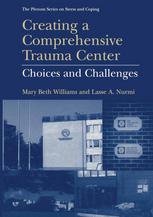

Most ebook files are in PDF format, so you can easily read them using various software such as Foxit Reader or directly on the Google Chrome browser.
Some ebook files are released by publishers in other formats such as .awz, .mobi, .epub, .fb2, etc. You may need to install specific software to read these formats on mobile/PC, such as Calibre.
Please read the tutorial at this link: https://ebookbell.com/faq
We offer FREE conversion to the popular formats you request; however, this may take some time. Therefore, right after payment, please email us, and we will try to provide the service as quickly as possible.
For some exceptional file formats or broken links (if any), please refrain from opening any disputes. Instead, email us first, and we will try to assist within a maximum of 6 hours.
EbookBell Team

4.7
46 reviewsEarly Thoughts on Creating Comprehensive Trauma Centers This volume has been many years in writing. When Dr. Donald Meichenbaum first suggested it and I approached my coauthor Lasse Nurmi, it did not seem to be as formidable a task as it has become. Interviewing the centers in this book has taken years-to get responses, to summarize those responses, and to return the summaries for further comment. Many centers have been created in that time; others have suspended operation. This volume does not claim to present even a majority of those centers. However, the ones contained herein are representative of "what is out there. " The idea to create a comprehensive trauma center is not new. The initial section of this forward examines thoughts I proposed as part of my compre hensive examination for my doctorate. Many of the ideas proposed then (1989) seem to fit now. It is my dream to put them into practice someday in the future. THE COMPREHENSIVE EXAMINATION QUESTION In 1989, one question on the written comprehensive examination ques tions for my doctorate was, "If you were to create a comprehensive trauma center in your suburban area, making use of what you have learned in your [doctoral] experience, describe the organization of that center, the mission, structure, personnel, funding, objectives, and services it would offer. " Some of the conclusions reached then now seem applicable to the task at hand: design ing comprehensive trauma centers (CTCs) for the 21st century.